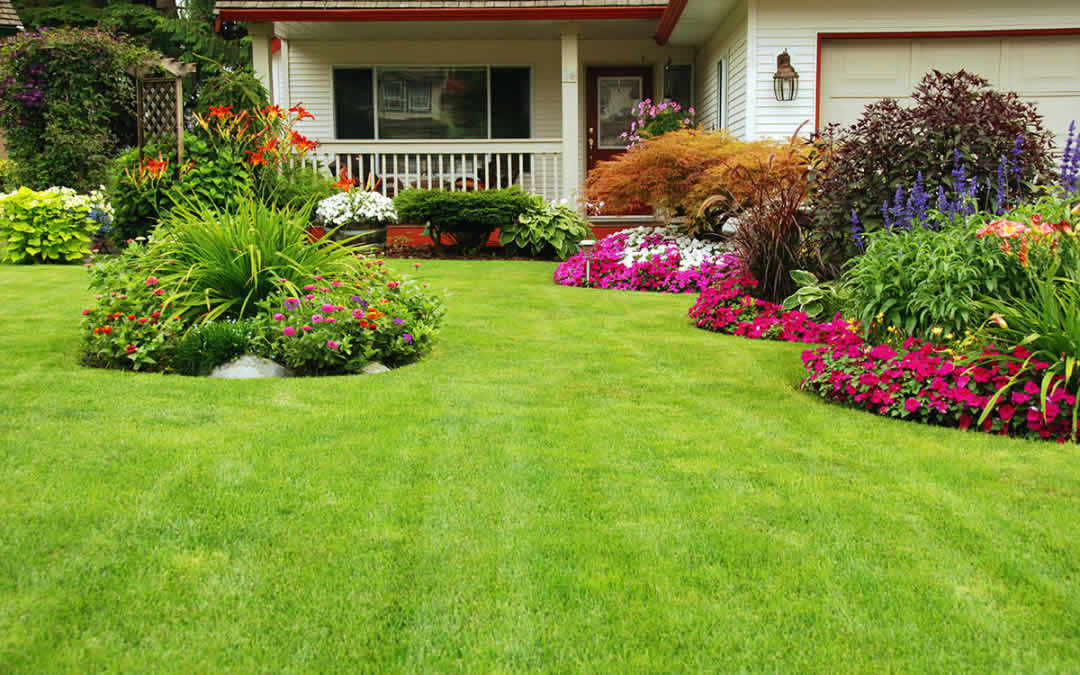The winter can be tough on yards. There are many things that you can do this winter to maintain your lawn. These tips will help you keep your lawn in great shape throughout winter.
Maintenance of your lawn is important
- Enhances the quality of air
The winter is when indoor and outdoor air quality can be the lowest. You can improve the air quality for you and those around you by taking good care of your grass. Maintaining a healthy lawn is an excellent way to enhance air quality. Grass uses carbon dioxide, and emits oxygen. Keep grass short to filter pollutants from the air.
- Help prevent soil erosion
By maintaining your lawn, you can reduce erosion of the topsoil. This is a problem that occurs during the winter when our yards are covered in snow and ice for extended periods. Healthy grass will not only look nice but also hold up better when the weather shifts from rain and snow to ice.
- How to prevent water runoff
Water runoff is a serious problem during the winter. Flooding can occur in streets and yards due to rain and melting snow. By allowing water to soak into the ground, a healthy lawn can help prevent flooding.
- Filters for water
A healthy lawn filters impurities out of the soil, before they percolate into the groundwater. By keeping your grass healthy, you are also contributing to the cleanliness of underground water.
- Reduces noise pollution
The grass can also be used to reduce noise pollution. The sound of noisy areas bounces back off buildings and sidewalks. Sound levels can be kept down by maintaining a healthy lawn.

Winter Lawn Maintenance Tips
- Use fertilizer
Applying fertilizer to your lawn will help keep it green and vibrant during the winter. Use a fertilizer that releases nutrients slowly over time. Apply a compost layer on top of your soil to keep it warm and moist.
- Aerate your lawn
The aeration of your lawn improves water drainage, and it allows nutrients and air to reach the roots. You can use a garden fork to do this or rent an aerator at your local home improvement shop. Ask for professional help if you’re unsure of how to properly aerate your grass.
- Cleaning regularly
Regularly cleaning your yard will help remove leaves and other debris which can build up during the fall. The leaf blower can be used to remove the leaves and debris that accumulate during the fall. This will reduce the spread of disease in the spring, when the temperatures rise.
- Reduce Traffic
Under snow, avoid walking on the lawn. It will help to keep the grass healthy and reduce compaction.
- Take note of weather extremes
Try to keep an eye on extreme weather conditions during winter. Water your lawn only sparingly if the temperatures suddenly drop or increase significantly within a short time period. This will prevent damage from frost heave.
What a healthy lawn can do for your life
- How to prevent allergies
Grass produces pollen grains. Allergies are often caused by pollen grains. A healthy lawn will help prevent allergies. Short grasses produce less pollen, which helps to keep allergies at bay.
- Reduces stress
It is a good thing to have a healthy lawn. A healthy lawn can reduce stress, as it gives you a feeling of pride and accomplishment. Healthy lawns also improve breathing and sleep. Spending time outdoors in green spaces is beneficial to your mental well-being and reduces stress, according to studies.
- Relaxing spot
It is essential to have a space in your backyard where you can relax and exercise. The green area will allow you to relax and exercise. A healthy lawn is a safe place for children, animals, neighbors, families and other people to enjoy.
- Makes your home cooler
The lawns will protect your house from sunburns and keep it cool in the summer. Cool air is beneficial to your health. You can reduce your air-conditioning costs.
The Lawn at the End of Winter Transitioning into Early Spring
- Remove all lawn debris
After winter, remove leaves, twigs and other debris to allow for new growth. At the end of the winter, remove the lawnmower and blower clippings. During winter, check under rocks, furniture and other objects on your lawn to make sure they don’t hide diseased plants.
- How to protect your lawn from road traffic
Close off the entrances of your yard using fencing, stones, wood or any other item. It is important to do this when snow melts and leaves you with soggy grass. Footprints are easily damaged. You should avoid walking on the lawn after spring has already started to grow. This will cause damage to young, delicate blades.
- Aerate grass
This will help your grass to get back in its growth routine. It will help to drain water and air, and also allow nutrients and oxygen to reach the roots.
- How to over-seed your lawn
To encourage growth, spread more seeds on the lawn. Use a rake or a similar tool to spread the seeds evenly. This is a good time to repair any patches of baldness on your lawn.
- Add nutrients to soil
After you have raked the grass, feed your lawn fertilizer. Slow-release fertilizers are used by many people to provide nutrients during the winter months and in early spring, before growth begins. Now is the perfect time to plant a lawn.
